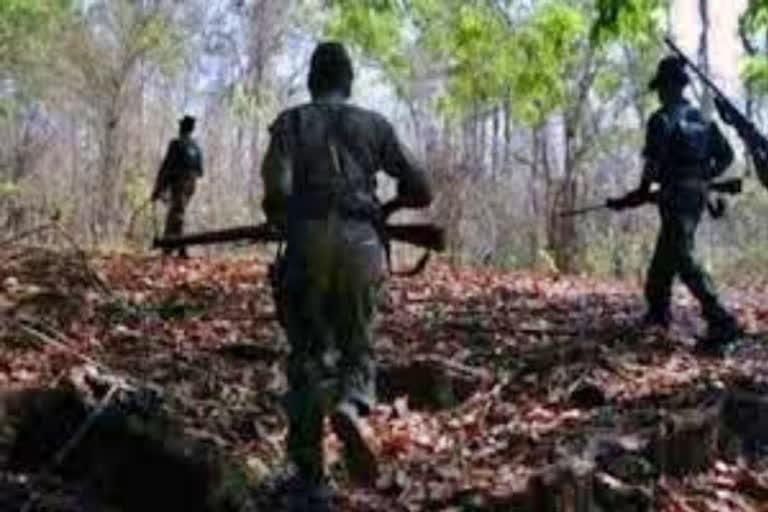Hyderabad: Naga Insurgency is the oldest insurgency in India. Nagas consists of several hundred tribes spread across the Naga Hills covering present-day Nagaland, certain areas of Manipur, Arunachal Pradesh and Assam along with the Naga Hill areas of our neighbouring country Myanmar.
They are waging an armed revolution since 1946 for an autonomous Naga state constituting Nagaland and areas of Arunachal Pradesh, Assam and Manipur— The Greater Nagalim. Their primary demand is for an autonomous region of Greater Nagalim, which would include all these areas.
How did it all start?
The Naga hills became part of British India in 1881 after the ‘annexation’ of Assam in 1826. In 1918 Naga club was formed and a political unit named the Naga National Council (NNC).
On August 14, 1947, the NNC, under the leadership of Angami Zapu Phizo (called the Father of the Nagas), declared Nagaland an independent state.
Following an alleged referendum in the state that supported a “sovereign Nagaland”, Phizo formed the Naga Federal Government (NFG) and the Naga Federal Army (NFA) in 1952 that sparked the scuffle with the government.
The conflict turned violent and the Armed Forces Special Powers Act (AFSPA) was implemented in 1958. NNC signed the Shillong Peace Accord in 1975, ending violence temporarily, but breakaway factions formed the National Socialist Council of Nagaland (NSCN) which refused to recognise the Shillong Accord and continued the conflict.
Demand Of The NSCN (IM): National Socialist Council Of Nagaland (Isak-Muivah)
A “Greater Nagalim” comprising “all contiguous Naga-inhabited areas”, along with Nagaland. That included several districts of Assam, Arunachal and Manipur, as also a large tract of Myanmar. The map of “Greater Nagalim” has about 1,20,000 sq km, while the state of Nagaland consists of 16,527 sq km.
The Nagaland Assembly has endorsed the ‘Greater Nagalim’ demand — “Integration of all Naga-inhabited contiguous areas under one administrative umbrella” — as many as five times: in December 1964, August 1970, September 1994, December 2003 and on July 27, 2015.
Also read: Naxals bomb forest guard house in Chaibasa
A chronology of the Naga Insurgency against Indian state
The Naga Hills became part of British India in 1881. The Nagas were independent before British rule and enjoyed quasi Independence since 1881.
1918: The effort to bring scattered Naga tribes together resulted in the formation of the Naga Club in 1918
1929: The Naga club told the Simon Commission in 1929 “to leave us alone to determine for ourselves as in ancient times”
01.04.1937: Naga areas kept out of the purview of Government of India Act (1935) and brought directly under British Crown.
1946: The movement for separate Naga Homeland gained momentum after the formation of the Naga National Council (NNC ) in 1946 under the leadership of A.Z Phizo.
29.06.1947: Sir Akbar Hyderi the then governor of Assam signed a 9 point agreement with the Nagas moderates T Sakhrie and Aliba Imti.
02.08.1947: Resolution to establish a sovereign Naga state. Naga National Council led by Angami Zapu Phizo revolts, NNC subsequently resolves to establish a sovereign Naga state.
14.08.1947: Naga National Council (Naga Club) declares Naga Independence Day.
01.05.1951: NNC claims 99% of Naga people support independence. NNC boycotts first general election of 1952, launches a violent secessionist movement
22.03.1956: Phizo creates underground Naga Federal Government (NFG) and a Naga Federal Army (NFA)
01.04.1956: Phizo's escape: New Delhi sends Army to crush the insurgency in the (then) Naga Hills District of Assam; Phizo escapes to (then) East Pakistan in December and, subsequently, in June 1960, to London
01.01.1958: AFSPA enforced, Armed Forces (Special Powers) Act enacted for Naga Hills District
03.07.1960: New Delhi signs 16-point agreement with Naga People’s Convention
1.12.1963: Nagaland attains statehood
01.01.1964: Peace Mission of Jai Prakash Narayan, BP Chaliha and Rev. Michael Scott to Nagaland, an Agreement for Suspension of Operation is signed with insurgents
Also read: 4 Naxals killed in encounter with security forces in Bihar's West Champaran
11.11.1975: Shillong Accord signed between Centre and NNC.
31.01.1980: The National Socialist Council Of Nagaland (NSCN) was formed in the jungles of Myanmar. Swu was named as the chairman, SS Khaplang, a Hemi Naga from Myanmar as the vice-president and Thuingaleng Muivah, a Tangkhul Naga from Manipur’s Ukhrul district, as the general secretary.
01.01.1988: NSCN splits, Khole Konyak and Khaplang form NSCN (K).
1991: Phizo died in London. Angami Zapu Phizo (He is called the Father of the Nagas)
25.08.1997: India announces three-month ceasefire
15.06.1995:P V Narasimha Rao meets Muivah and Isak in Paris
03.02.1997: Deve Gowda meets NSCN (IM) leadership in Zurich
01.08.1997: Ceasefire with NSCN-IM takes effect in Nagaland; bid to extend it to rest of northeast leads to violence
30.09.1998: Atal Bihari Vajpayee and Brajesh Mishra meet NSCN (IM) leaders in Paris
27.04.2001: NSCN-K suspends war and ceasefire takes effect
09.01.2003: Muivah and Isak hold talks with Vajpayee and Advani in Delhi
07.12.2004: NSCN (IM) leaders meet Manmohan Singh
31.07.2007: Indefinite ceasefire-Ceasefire between NSCN (IM) and Government of India extended indefinitely
27.03.2015: NSCN-K junks ceasefire, renews conflict
03.08.2015: The Centre signed a framework agreement with the NSCN (I-M).The agreement paved the way for the ongoing peace talks by derecognising the outfit as a militant organisation.
2017: Six other Naga armed outfits under the banner of the Naga National Political Groups (NNPGs) joining the talks.
A government-imposed deadline of 31 October 2019 for concluding talks with Naga groups passed did not materialise.



